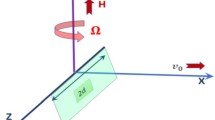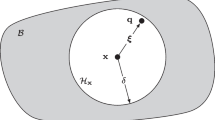Abstract
A concurrent multi-scale modeling method for finite temperature simulation of solids is introduced. The objective is to represent far from equilibrium phenomena using an atomistic model and near equilibrium phenomena using a continuum model, the domain being partitioned in discrete and continuum regions, respectively. An interface sub-domain is defined between the two regions to provide proper coupling between the discrete and continuum models. While in the discrete region the thermal and mechanical processes are intrinsically coupled, in the continuum region they are treated separately. The interface region partitions the energy transferred from the discrete to the continuum into mechanical and thermal components by splitting the phonon spectrum into “low” and “high” frequency ranges. This is achieved by using the generalized Langevin equation as the equation of motion for atoms in the interface region. The threshold frequency is selected such to minimize energy transfer between the mechanical and thermal components. Mechanical coupling is performed by requiring the continuum degrees of freedom (nodes) to follow the averaged motion of the atoms. Thermal coupling is ensured by imposing a flux input to the atomistic region and using a temperature boundary condition for continuum. This makes possible a thermodynamically consistent, bi-directional coupling of the two models.
Similar content being viewed by others
References
G. Chen, Nanoscale energy transport and conversion, (Oxford University Press, New York, 2005), pp. 238–240.
Y. J. Han and P. G. Klemens, Physical Review Letters B, 48, 6033 (1993).
R. Zwanzig, Nonequilibrium Statistical Mechanics, (Oxford university press, New York, 2001), pp. 3–10.
J. Fish , M.A. Nuggehally, M.S. Shephard, R.C. Picu, S. Badia , M.L. Parks and M. Gunzburger, Computer Methods Applied Mechanics and Engineering, 196, 4548 (2007).
Daan Frenkel and Berend Smith, Understanding Molecular Simulation, from Algorithms to Applications, (Academic Press, Cornwall, 1996), pp. 69–70.
Thomas J. R. Hughes. The Finite Element Method: Linear Static and Dynamic Finite Element Analysis, (Prentice Hall, New Jersey, 1987), pp. 459–462.
A. N. Tikhonov and A. A. Samarskii, Equations of Mathematical Physics, (Dover, New York, 1990), pp. 244–252.
Author information
Authors and Affiliations
Rights and permissions
About this article
Cite this article
Picu, R.C., Mathew, N. A Concurrent Multi-Scale Method for Coupling Atomistic and Continuum Models at Finite Temperatures. MRS Online Proceedings Library 1229, 4 (2009). https://doi.org/10.1557/PROC-1229-LL04-07
Received:
Accepted:
Published:
DOI: https://doi.org/10.1557/PROC-1229-LL04-07




